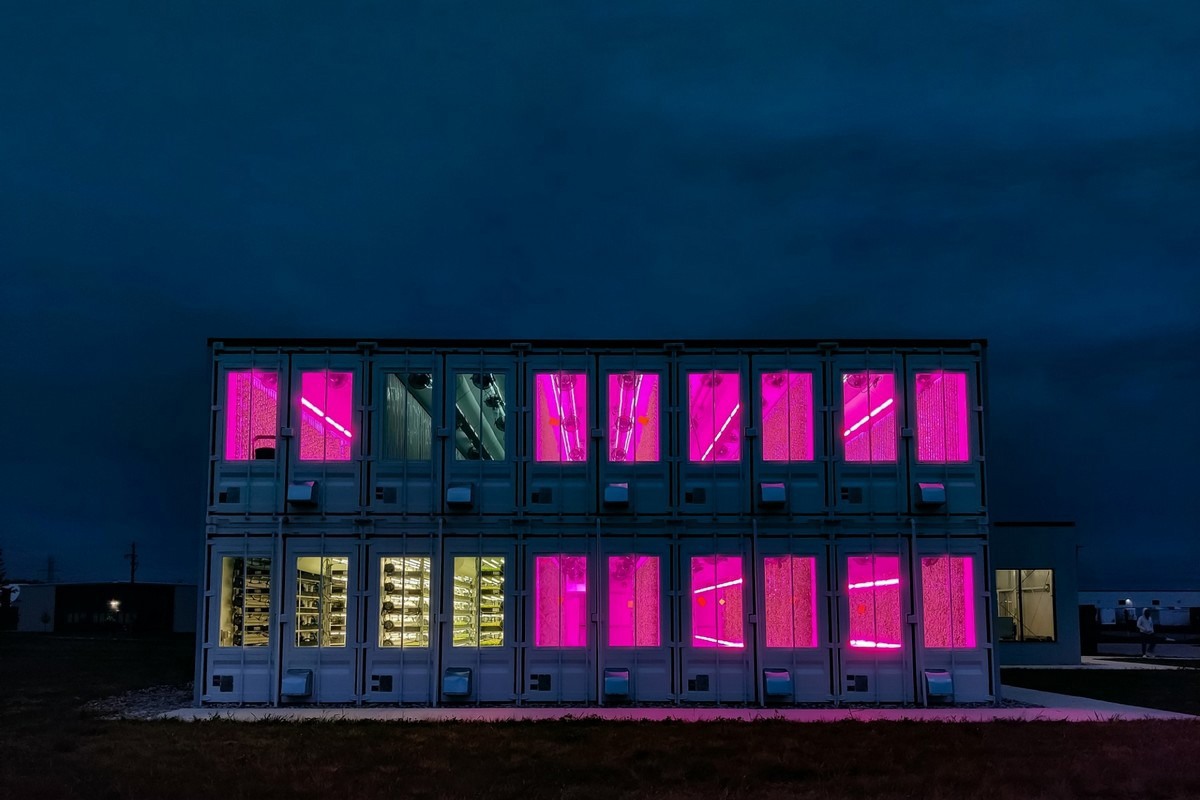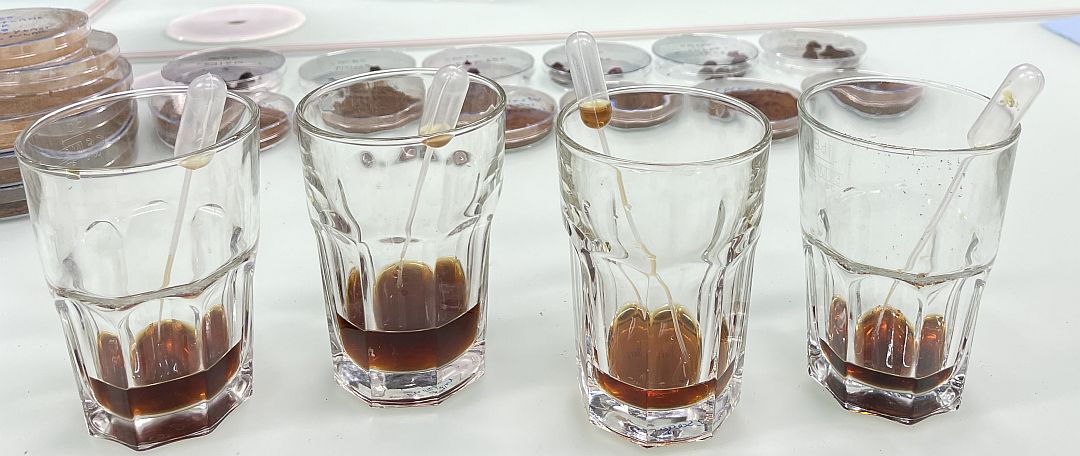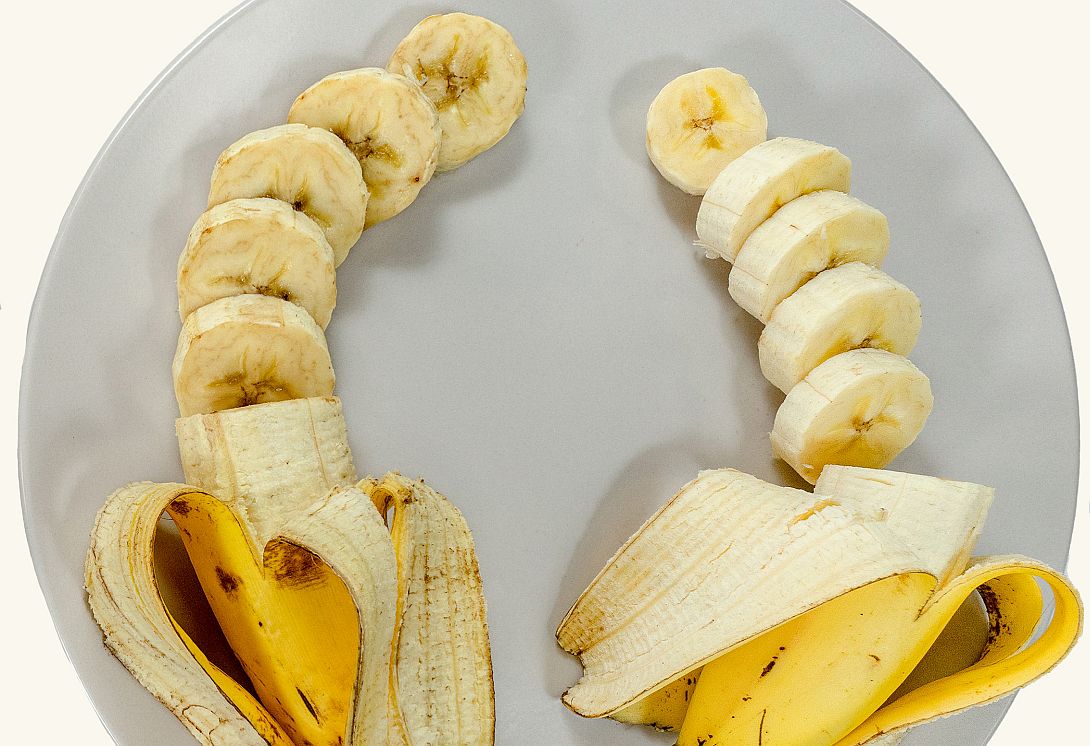There is a real problem in the sciences that goes far beyond the methods and experiments. It is a deeper issue that has more to do with the very ideology used by the researchers themselves which permeates throughout much of the scientific literature. It is this idea that finding indirect evidence of aasumed particles or even genomic sequences in a (heavily altered) tissue, cell culture, and/or blood sample can legitimately point to a cause and effect relationship. However, this is obviously not the case and those who promote this idea are engaging in what is known as the false-cause logical fallacy. This is better known either by the phrase “with this, therefore because of this” or “correlation does not equal causation:”
Correlation vs. Causation
“The place where this fallacy shows up the most often is in, which unfortunately is where most people get their science information and news. Imagine you’re looking to buy a magazine. Which headline best grabs your attention:
- “One study on a limited population shows that when people do X, Y happens a certain percentage of the time.”
- “Link found between doing X and Y happening!”
- “New research shows that X causes Y.”
If you ever read a scientific paper, you’ll find that almost all scientists make statements like that first one. However by the time this research hits the popular media, it’s often transformed to look a lot more like that last one.”
https://www.google.com/amp/s/www.quickanddirtytips.com/education/science/correlation-vs-causation%3famp
We see this all the time in science. It is very common to find correlations in relationships yet know nothing about the cause. Sadly, more often than not, these supposed relationships are assumed to be one of cause-and-effect without providing any direct evidence that this is the case.
Take, for instance, the work of Astrid Fagraeus. It was said that a “breakthrough” in Immunology occurred in 1947-48 when Astrid Fagraeus published her doctoral dissertation “Antibody Production in relation to the Development of Plasma Cells.” She was given the credit for showing that the plasma cells produce antibodies. Before her paper, the function of plasma cells was unknown. But did Astrd Fagraeus really prove the correlation between plasma cells and antibodies definitively?
According to the book “Advances in Immunology” by Frederick W. Alt, she did not:
“In 1902, the Russian scientist
Alexander Maximow summed up the findings on plasma cells in a comprehensive pathological work. Based on the studies of Marschalko, Almkvist and others, Maximow described plasma cells as “mononuclear leukocytes that have emigrated from blood vessels and are particularly altered, mostly lymphocytes, which are present in normal lymphoid organs and pathological tissues and may possibly provide stable elements” (Maximow, 1902). At that time the nature of “stable elements” remained unclear, but from today’s perspective, these stable elements are certainly secreted antibodies. In 1938, Fred Kolouch Jr. (Minnesota) directly correlated the formation of plasma cells with injection of the antigen. Moreover, he made the essential finding that increase of serum antibodies accompanied the accumulation of plasma cells in the bone marrow (BM) and postulated for the first time that plasma cells produce antibodies, even though he had no direct experimental evidence for his hypothesis (Kolouch, 1938). This breakthrough in immunology was achieved in 1948 by the Swedish immunologist Astrid Fagraeus (Fagraeus, 1947, 1948). During her studies on multiple myeloma (MM), she observed an increase of plasma cell numbers in hypergammaglobulinemia, a finding which had already been described earlier by Bing (Bing, 1940). Fragraeus performed in vitro studies with plasma cell-enriched spleen biopsies from horse serum-injected rabbits and found a direct correlation between plasma cell numbers in the tissue and the amount of secreted antibodies in the culture medium. However, she was unable to provide clear evidence that plasma cells were indeed the cells that produced antibodies. Finally, in 1955, Leduc and colleagues succeeded in concluding that plasma cells produce antibodies by using immunofluorescence to detect antigen-binding proteins (i.e., antibodies) in morphologically defined plasma cells in lymph nodes of diphtheria-toxin-immunized rabbits (Coons, Leduc, & Connolly, 1955; Leduc, Coons, & Connolly, 1955).”
https://doi.org/10.1016/bs.ai.2020.01.002

As can be seen by the above source, many scientists, including Fagraeus, found correlations between plasma serum and antibodies. However, Fagraeus could not provide clear evidence of the “direct correlation” that she observed. Did this lack of proof stop the accolades by the scientific institutions announcing Fagraeus’s breakthrough? No, the lack of clear evidence did not stop the scientific community from recognizing Fagraeus and her findings as proof that plasma cells produce the still unseen antibodies:
“Fagraeus’ doctoral dissertation, ‘Antibody Production in relation to the Development of Plasma Cells‘, attracted international attention and was considered a milestone in modern immunology. In this work, she was the first to show that plasma cells produce antibodies (IgG). Until then their function was unknown.”
https://en.m.wikipedia.org/wiki/Astrid_Fagraeus
“When Behring and Kitasato demonstrated the specific protection of rabbits by serum from infected animals in 1890 [4], it became clear that serum antibodies could provide “immunity”, i.e., protection against a recurrent infectious challenge. It took another 60 years until Astrid Fagreus discovered the cells secreting those antibodies, the “plasma cells”, describing them as “terminal stages of B cell differentiation” [5]. “Protective memory”, as provided by serum antibodies, was later conceptually complemented by a “reactive memory” formed by expanded and long-lived populations of antigen-experienced T and B lymphocytes.”
https://www.ncbi.nlm.nih.gov/pmc/articles/PMC3337994/
“In 1943, Mogens Bjørneboe and Harald Gormsen were the first to experimentally show that repeated immunization of rabbits with polyvalent vaccines leads to massive proliferation of plasma cells in most organs and that this proliferation correlates with antibody concentration.
That finding was supported a few years later by Astrid Fagraeus, who reported that plasma cells produce antibodies in vitro. Tissue cultures of spleens from rabbits immunized with live bacteria showed abundant formation of plasma cells. Fagraeus concluded that plasma cells appear in connection with strong antigen stimulation.”
https://www.nature.com/articles/ni.3602
While the actual dissertation paper was difficult to find, I did manage to obtain and take an image of the Nature article in which she details her work. While I was unable to copy/paste from the article itself, there was a summary provided by the Journal of Immunology:

Before the summary, let’s look a little closer at what Fagraeus did to achieve her results:


Pieces of rabbit spleen were cultured in normal rabbit serum, tyrode solution (an acidic solution made up of various substances), and isotonic sodium bicarbonate (generated by adding 150 mEq of sodium bicarbonate to a liter of 5% dextrose). A gas mixture of 80% oxygen, 4.5% carbon dioxide, and nitrogen was then passed into the tubes which were incubated at 37° C for 5-12 hours. From this tissue cultured mixture, Fagraeus assumed that the accumulation of plasma cells meant that they produced antibodies. Listed below is a summary of the results:
The Plasma Cellular Reaction and Its Relation to the Formation of Antibodies in Vitro
The Journal of Immunology 58 (1), 1-13, 1948
Summary
1. During secondary response, elicited in sensitized rabbits by means of intravenous injections of antigen, a great increase in the number of plasma cells (pl.c.) in the spleen was recorded simultaneously with the increase of circulating antibodies.
2. Pl.c. were confined almost exclusively to the red pulp, especially after the injection of living S. typhi. They originated apparently from reticulum cells, passing through a chain of development: transitional cell → immature pl.c. → mature pl.c.
Pieces of spleen were excised at different times during the period of antibody formation in rabbits, differential cell counts were made and the capacity of excised splenic tissue to form antibodies in vitro was investigated. The following observations were made:
a. The amount of antibody liberated in plain tissue extracts, under conditions preventing growth or metabolism of cells, was very low, whereas significant yields were obtained in tissue cultures.
b. The capacity of the red pulp abundant in pl.c. to produce antibodies in vitro was considerably superior to that of lymph follicles, rich in lymphocytes but devoid of pl.c.
c. Antibody production was comparatively poor in tissue containing only transitional cells, reached a maximum when numerous immature pl.c. were present and receded when predominantly mature pl.c. were found.
4. After intravenous injections the antigen accumulated in those places where pl.c. subsequently developed.
The conclusion is drawn that antibodies under the conditions of the experiments, are formed by cells of the R.E.S., passing through a chain of development, the final link of which is the mature pl.c.
https://www.jimmunol.org/content/58/1/1.short
doi: 10.1038/159499a0.

While the methods used to determine antibody content is not overly clear beyond staining with methyl green pyronine and the steps used for tissue culturing, it is clear that Fagraeus relied on the power of correlation to suggest that plasma cells create antibodies. This process of plasma cells producing antibodies could not be observed as antibodies themselves have never been observed in a purified/isolated state nor can such a production process be seen inside of a living organism. Fagraeus relied on the proliferation of plasma cells being a correlation of antibody content and assumed that staining patterns were able to tell her that antibodies were present in the dead tissue culture sections. Obviously, staining tissue cultures would be a form of indirect evidence which is probably why Frederick Alt concluded that even though Fagraeus found a “direct correlation” between plasma cell numbers in the tissue and the amount of secreted antibodies in the culture medium, she was unable to provide clear evidence that plasma cells were the cells that produced antibodies. Granted, Alt then immediately stated that in 1955, Leduc and colleagues were successful in concluding that plasma cells produced antibodies by using immunofluorescence to detect antibodies in morphologically defined plasma cells in lymph nodes of diphtheria-toxin-immunized rabbits. However, was this truly the case? How effective is immunofluorescence at detecting antibodies? From the first sentence in the discussion section of the 1955 paper listed as a reference, Leduc and colleagues state this:
“The method employed for the histological demonstration of antibody is clearly specific, despite the confusion caused at times by the occurrence of non-specific reactions.”
doi: 10.1084/jem.102.1.49.
In other words, the method they used to determine antibody content was not specific even though they claimed that it was. This is a nice case of scientific double-speak attempting to confuse the audience into accepting the idea that the methods used are in fact valid when the evidence shows otherwise. In a follow-up paper by Coons in 1956, he admitted to some other interesting revelations:
“The use of labeled antibody requires a certain familiarity with the methods and tradition of immunology, as well as with the more strictly practicaI procedures used in the purification of antigens and the production of antisera. There are of course many antigenic substances which can
theoretically be studied under a variety of circumstances by such means. The specificity of every reaction must be established by appropriate controls, the character of which will vary with the substance and the circumstance. Labeled antibodies so employed identify objects and localize them; they are most effective when used to answer a morphological question.”
“The nonspecific reactions referred to above are due to at least three elements: side reactions producing derivatives of fluorescein not readily removed by dialysis (these “stain” elastic tissue, blood vessel endothelium, and perhaps other elements), probably proteins in serum which react with tissue components (cf. Kidd and Friedewald, 1942), and finally antibodies against tissue components occurring as a result of immunization (e.g., Watson and Coons, 1954).”
“The antibody content in these cells increased, as judged by observation of the intensity of fluorescence, during this sequence.”
https://doi.org/10.1016/S0074-7696(08)62565-6

According to Coons, the purification of the antigen and the production of antisera are of critical importance to obtaining results. Oddly, he says nothing about the importance of purifying and isolating the antbodies. Theoretically, there are a variety of antigens that can be studied under a variety of circumstances using their method. However, appropriate controls are a necessity to determine specificity as specificity will vary with the substance and the circumstance. Non-specific reactions do occur and it was stated that there were at least three reasons for this:
- The stain reacts to other tissues
- Other proteins in the blood react to the tissue
- Antibodies are present from immunization
- ???
Thus, Coons believed that it was not a failure of the immunofluorescence methods they utilized to be specific in identifying antibodies. Instead, inconsistent results were explained away by his three postulated excuses, along with the possibility that other unknown excuses remained for the apparent lack of specificity. Beyond these reasons, the method itself was apparently “clearly specific.”
The reason this matters is shown in the final highlight where Coons stated that the antibody content in these cells increased, as judged by observation of the intensity of fluorescence. In other words, the only way they could determine antibodies were present in the tissue culture samples was due to the fluorescence stain which they used as a guide to tell them the amount of antibody by the intensity of the fluorescent signal. Beyond the fact that this is an indirect way to detect and measure unseen entities, if the test is not specific and regularly cross-reacts with other substances for various reasons, the results can not be specific to detecting antibodies and are essentially meaningless. The use of fluorescence to determine antibody is just another example of a correlation being established as a fact when direct evidence does not establish a causal relationship. As Coons pointed out, the above 3 excuses, as well as any other unknown variable he did not think up to list, may have been the cause for any of the results rather than the assumed antibodies. Thus, the correlation between the fluorescence signal and the presence of antibodies remains unproven.
What must be understood about any of the evidence relating to antibodies is that there is nothing there but dreamt up hypothetical fantasies and unrelated chemistry experiments attempting to claim an invisible entity was the cause of the observed lab-created effects. It is the same exact trick used in virology which is why these two (pseudo)sciences go hand-in-hand. If the entity in question has never been observed in a purified and isolated state and was conjured up without ever being found in nature, none of these reactions matter as the results are being applied to a fictitious entity. A story is created in order to try and explain the unrelated experimental results in order to fit the latest and greatest revision of the agreed-upon unproven theory.

Finding plasma cells near fluorescent dyes in stained tissue cultures does not mean that antibodies are present nor that plasma cells produce these imaginary entities, especially when the method used is known to be non-specific and prone to cross-reactions. If various scientists get the same or similar results using a similar method, this still does not prove the correlation correct. All that does is strengthen the correlation. In order to prove that plasma cells produce antibodies, the antibodies themselves must be shown to exist in a purified and isolated state first. Only then would any immunofluorescence test be able to be calibrated and validated to the intended target so that the results have some semblance of any meaning. Even then, as the process of plasma cells producing antibodies is unobservable, this connection would still remain nothing more than a strong correlation.
However, none of this matters as it is very apparent that the scientific community is of the mindset that correlation does in fact equal causation. They want you to believe that the fluorescent dye equals antibodies. They want you to believe that the cultured cells dying equals “virus.” Yet these researchers would be wise to remember:
“Correlation tests for a relationship between two variables. However, seeing two variables moving together does not necessarily mean we know whether one variable causes the other to occur. This is why we commonly say “correlation does not imply causation.”
A strong correlation might indicate causality, but there could easily be other explanations:
- It may be the result of random chance, where the variables appear to be related, but there is no true underlying relationship.
- There may be a third, lurking variable that that makes the relationship appear stronger (or weaker) than it actually is.
https://www.jmp.com/en_us/statistics-knowledge-portal/what-is-correlation/correlation-vs-causation.html

Source link
Author Mike Stone







